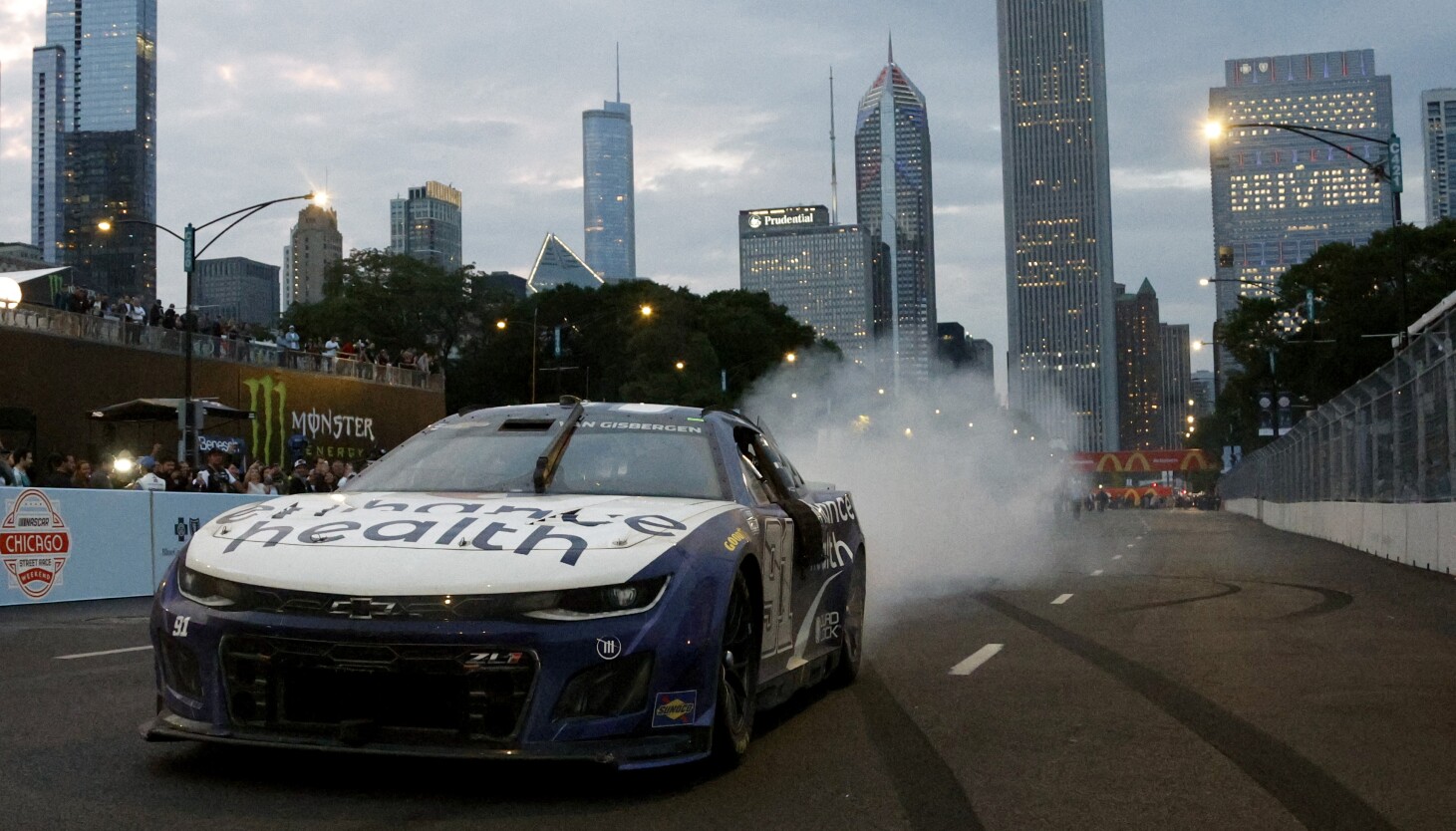When I think of NASCAR in Chicago, I think of a couple of things.
Foremost is the idea of fast cars as a symbol of everything good, bad and crazy about this nation.
NASCAR stands for National Association for Stock Car Auto Racing, which means you, the average citizen, theoretically could take your ‘‘stock’’ car out of your garage, head to the track and let ’er rip.
The word stock originally meant an automobile that wasn’t modified from its original factory configuration. But this is America, folks. You think Junior Johnson cared about rules when he was runnin’ through the woods of ‘‘Caroline’’ with a trunkful of moonshine?
NASCAR had its genesis during Prohibition, when booze was illegal, and country boys cooked up corn mash via moonlight in Appalachia. Young daredevils then ran the ‘‘white lightning’’ out in cars that the drivers slicked up to outrun the cops and ‘‘infernal revenuers.’’
All those Fords, Chevys and Plymouths with their big V-8 engines got stroked, bored out and stripped down for attack. Naturally, the moonshiner car drivers soon wanted to race each other, starting in cow pastures and cornfields, moving on to dirt tracks, county fairs and eventually the flat sands of Daytona Beach. That’s where Bill France Sr. organized NASCAR in 1947.
NASCAR is 100% corporate these days, but it owes its soul to those early backwoods outlaw race winners — Curtis Turner, Tim Flock and, of course, the legendary Junior Johnson. That old boy’s copper still sits proudly on display at the NASCAR Hall of Fame in Charlotte, North Carolina.
Author Tom Wolfe once described Johnson as “the lead-footed chicken farmer from Ronda.’’ But Johnson was no idiot when it came to elite driving and stoked engines. The things he and moonshiners did to their motors and car chassis back in the early days were precursors to what NASCAR mechanics do today and the ways they craftily push the engine rule book to the limit and beyond.
Going fast was a necessity for the booze drivers, not an ego project.
“Moonshiners put more time, energy, thought and love into their cars than any racer ever will,’’ Johnson, who died in 2019, once said. ‘‘Lose on the track, and you go home. Lose with a load of whiskey, and you go to jail.”
It’s that renegade spirit, so hard to keep alive in this era of digital quickness, that still lies, precariously, at the root of NASCAR. The drivers may now be millionaires and the cars they use may be as close to ‘‘stock’’ vehicles as SpaceX tubes are to bottle rockets, but speed is still the game.
That the NASCAR Chicago Street Race on Saturday and Sunday will have cars flying through the lakefront heart of our city rather than around a distant oval — or farmer Brown’s back 40, for that matter — is a sign of the times. Bring the spectacle to the millions. Follow the revenue. Shut down anything for profit.
Which brings me to the second part of my thoughts on NASCAR in Chicago. A prime section of the city has been taken over by a private business and politicians, starting with former Mayor Lori Lightfoot, then on to Mayor Brandon Johnson, to be leveraged not for the benefit of citizens but for money.
This is only the second year of what NASCAR describes as an ‘‘annual’’ race. The numbers trotted out show that it rakes in cash — one study says Chicago got an ‘‘economic impact of $109 million from the [2023] event . . . plus an estimated $24 million worth of publicity.’’ But at what cost?
This is where it gets tricky. What price do you put on having streets and main thoroughfares such as DuSable Lake Shore Drive blocked. Sure, it’s no problem if you come in from Iowa for fun. But if you live and work downtown? If you commute?
And what about the noise, the closing of parks, the moving of the beloved Taste of Chicago until after Labor Day, when it’s typically held near the Fourth of July? And you wonder about all those filled hotel rooms and restaurants. Isn’t it possible many of those places would be filled without NASCAR? It is tourist season, after all.
“For us, the priority was an iconic location,” Julie Giese, the NASCAR executive in charge of the race, said last year.
Yep, Chicago is beautiful in July, with a gorgeous skyline.
So like it or not, here come the race cars again. Along with a touch of renegade spirit. Driven, of course, by money.
